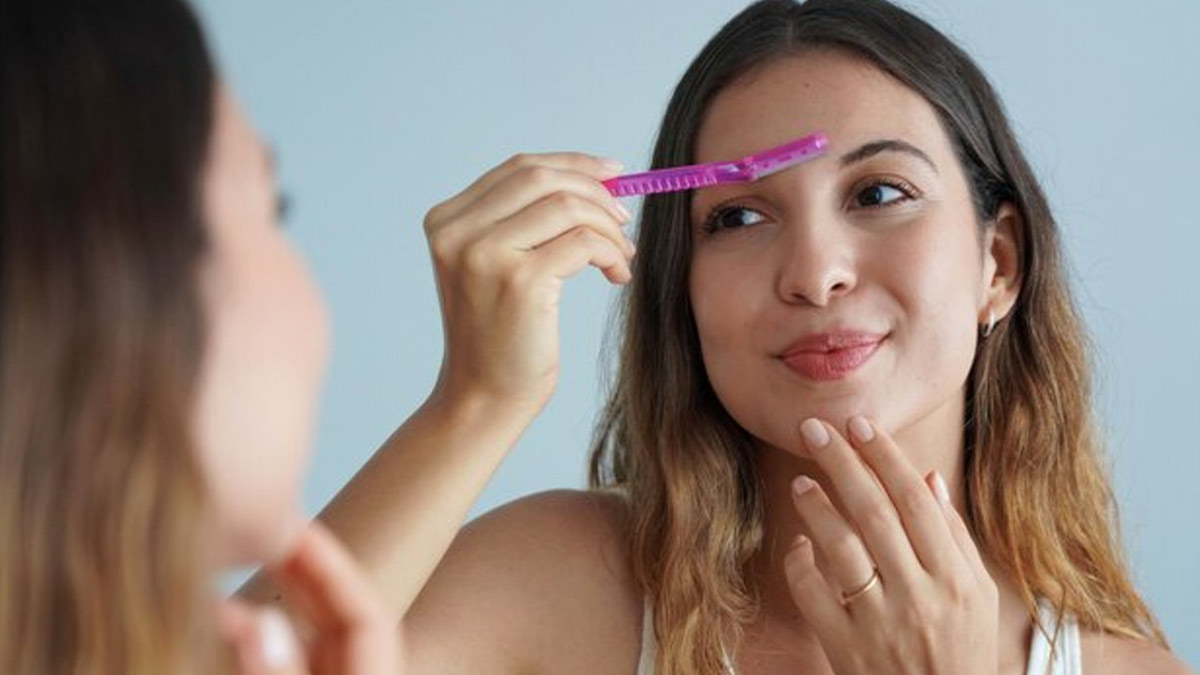
In a world where convenience is key, at-home skincare devices have become the latest trend. From LED masks that claim to smooth wrinkles to microcurrent tools that promise a lift, these gadgets offer professional-like results without stepping outside. But with so many options, it’s tough to know which ones work. We spoke to Dr Kratika Mohan, Dermatologist, who shared insights on the same.
Table of Content:-
Understanding the Technology
Before diving into the specific devices, it's essential to understand the underlying technologies that power them.
LED (Light-Emitting Diode) Therapy

This involves using specific wavelengths of light to stimulate skin cells and promote collagen production. "Different colours of light are associated with different benefits. For example, red light can help reduce wrinkles and fine lines, while blue light is effective for treating acne," said Dr Mohan.
According to the American Society of Plastic Surgeons, LED light therapy primarily targets skincare by offering anti-ageing benefits and reducing inflammation. It can boost collagen production, helping to diminish wrinkles and other signs of ageing. Additionally, LED light therapy is used to treat conditions, such as acne, dermatitis, eczema, psoriasis, rosacea, scarring, and sun damage.
Also Read: Gentle Skincare: Skip The Irritation With This Acid-Free Routine for Sensitive Skin
Microcurrent
This technology uses low-level electrical currents to mimic the body's natural electrical signals. It is believed to stimulate muscle contractions and improve blood circulation, leading to a more toned and lifted appearance.
According to a 2012 study, microcurrents may help reduce facial wrinkles, with more noticeable improvements in the forehead area compared to the nose and mouth regions. Furthermore, based on photo assessments, the treatment results were not only satisfactory immediately afterwards but also maintained for at least a month post-treatment.
Dermaplaning

This involves using a small, disposable blade to gently exfoliate the skin's surface, removing dead skin cells and vellus hair (peach fuzz).
According to Johns Hopkins Medicine, dermaplaning is a procedure used to treat deep acne scars. The procedure involves using a hand-held tool called a dermatome, which resembles an electric razor. The dermatome has an oscillating blade that gently removes the surface layers of skin around facial imperfections, such as craters.
Popular At-Home Skincare Devices
LED Masks

LED masks have gained significant popularity due to their ease of use and potential benefits. "While studies have shown that LED therapy can be effective in reducing wrinkles and improving skin texture, it's important to choose a reputable brand and follow the manufacturer's instructions carefully," said Dr Mohan.
Microcurrent Devices
Microcurrent devices are often touted as a non-invasive alternative to facial lifting procedures. "While some studies have suggested that microcurrent can improve skin tone and elasticity, the results may vary depending on individual factors and the consistency of use," added Dr Mohan.
Dermaplaning Tools
Dermaplaning tools can be a great way to achieve a smoother, brighter complexion. However, it's crucial to use them with caution and avoid applying too much pressure, as this can lead to skin irritation.
Also Read: Post Workout Skincare: Expert Lists Effective Routine To Prevent Breakouts
Are Skincare Devices Worth the Investment?
The decision to invest in an at-home skincare device ultimately depends on your needs and budget. While these devices offer benefits, they may not be suitable for everyone. Factors to consider shared by the expert include:

- Skin Type: Some devices may be more effective for certain skin types. For example, LED therapy can be beneficial for acne-prone skin, while microcurrent may be more suitable for mature skin.
- Consistency of Use: To see results, it's important to use these devices consistently over time.
- Cost: At-home skincare devices can range from affordable to high-end. You should also consider your budget and the potential return on your investment.
- Safety: Always prioritise safety when choosing a device. Read reviews of other users and look for products from reputable brands.
Bottomline
Dr Mohan concluded, "At-home skincare devices offer a convenient way to enhance your skincare routine. However, it's essential to research and choose appropriate devices for your skin type and goals. By understanding the technology behind these devices and using them correctly, you can potentially achieve impressive results. Remember, while these devices can be a valuable addition to your skincare regimen, they should not replace professional consultations with a dermatologist or esthetician."
[Disclaimer: This article contains information provided by an expert and is for informational purposes only. Hence, we advise you to consult your own professional if you are dealing with any health issues to avoid complications.]
Also watch this video
How we keep this article up to date:
We work with experts and keep a close eye on the latest in health and wellness. Whenever there is a new research or helpful information, we update our articles with accurate and useful advice.
Current Version